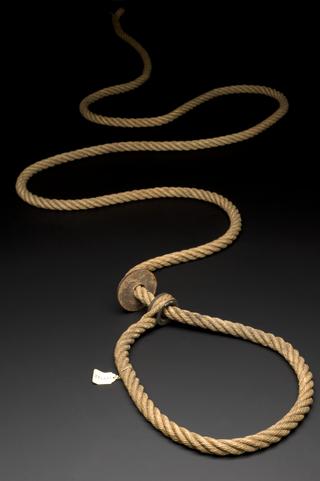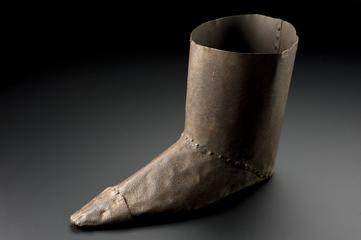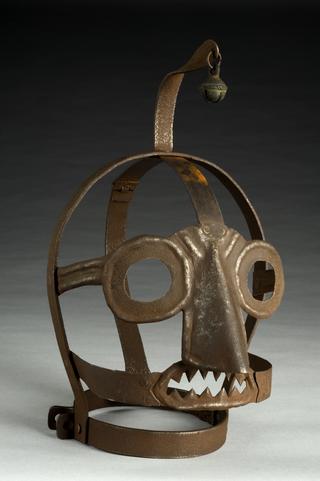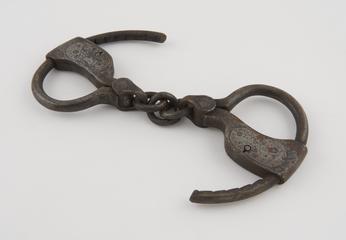












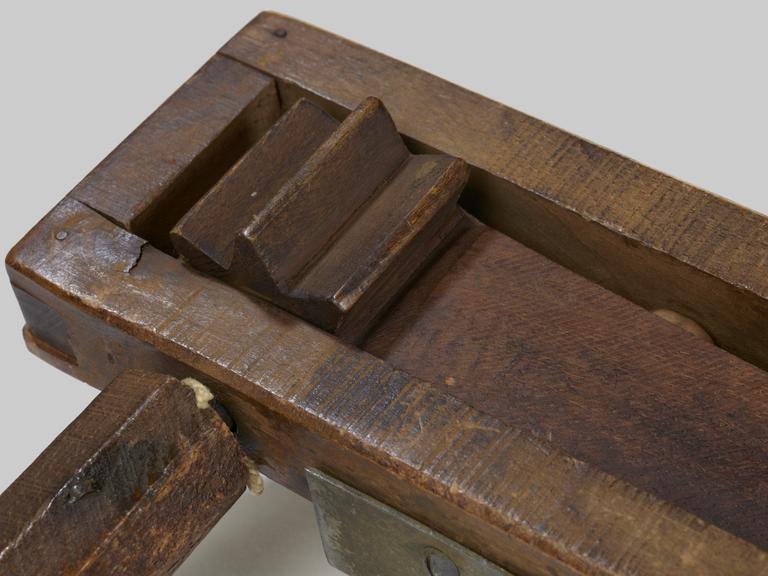

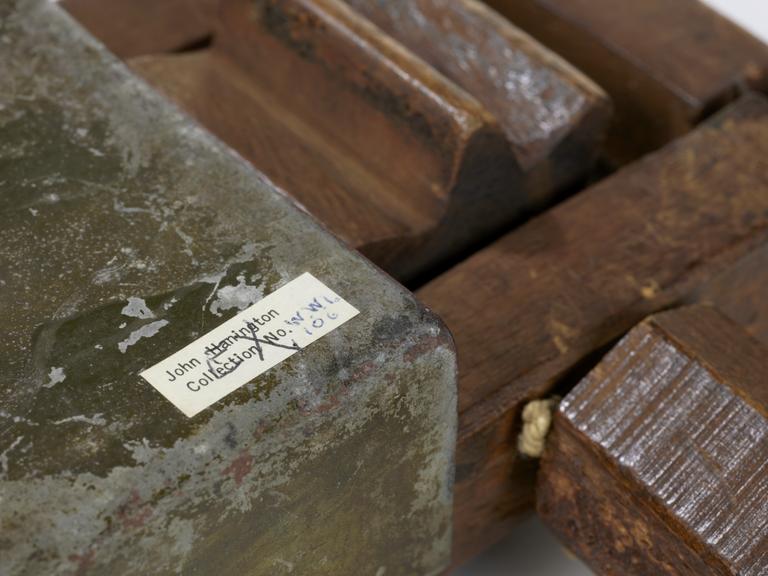
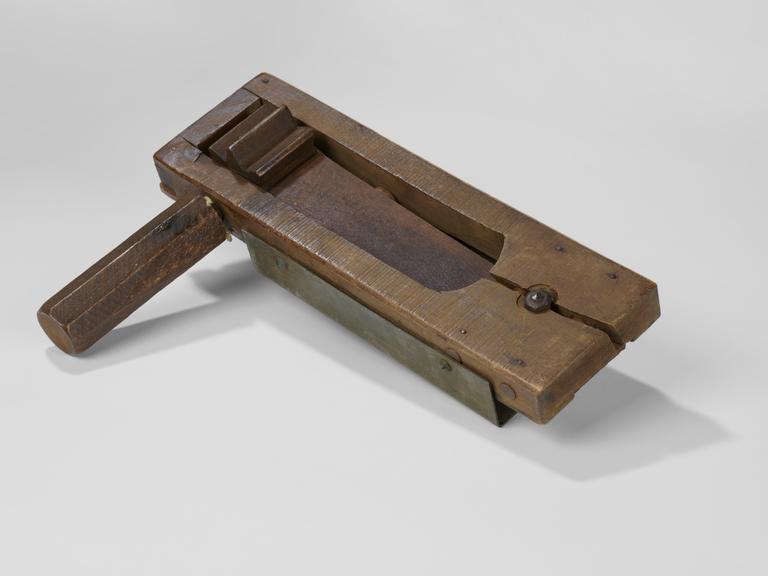

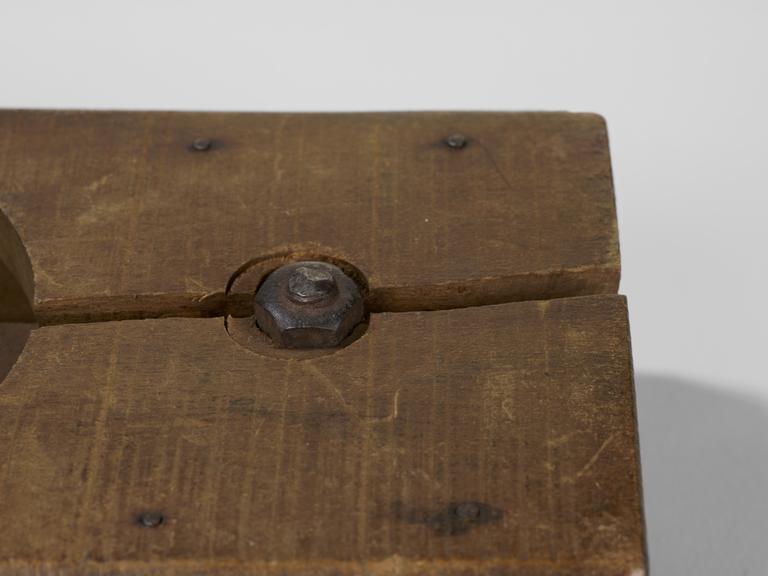

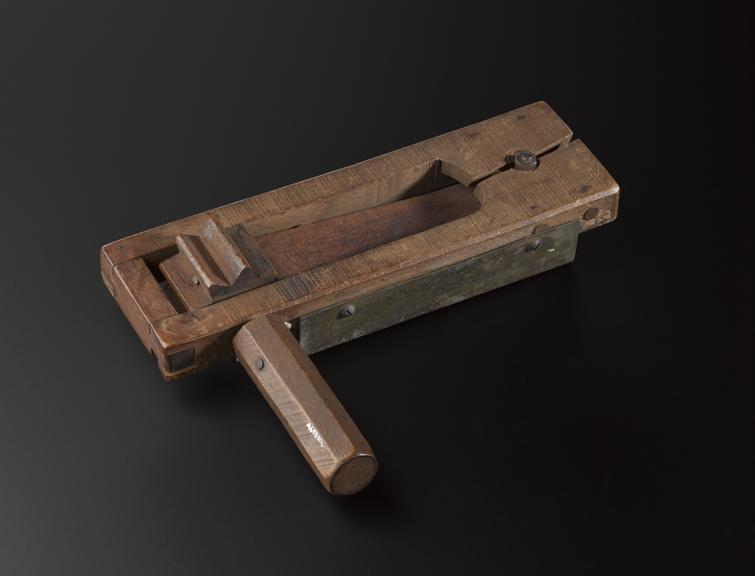

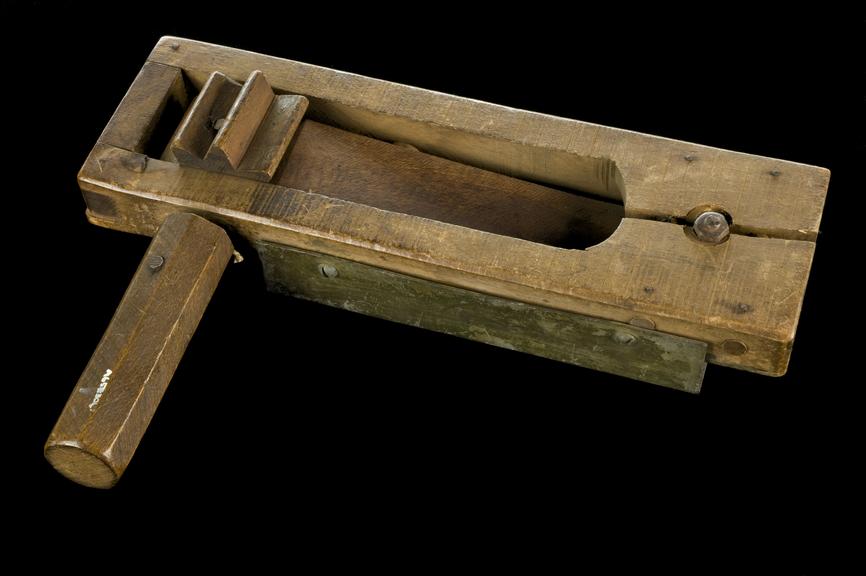
Gas alert rattle, 1917, made of wood and metal for use by British forces during poison gas attacks during the First World War, 1914-1918.
During the First World War, time was of the essence during a gas attack. Although some gases had distinctive smells – such as straw, mustard, even geraniums – men often relied on a loud alarm to sound the warning. This rattle would have been used to give such a warning and ideally enough time put on a gas mask and any additional protective clothing – although even its noise may not have been heard over the din of battle. Rattles such as these reappeared in the post-war years when, adopted by enthusiastic supporters, they became familiar sounds at football matches.
Poison gas was first used by the German Army in 1915, although quite quickly it became a weapon used by all sides. In the course of the conflict, three substances were responsible for most gas-related injuries and deaths during the First World War – chlorine, phosgene, and mustard gas. The gases varied in their effects, but ‘Mustard gas’, which could cause blindness and severe burns to the skin, was particularly feared.
Details
- Category:
- Wellcome (general)
- Collection:
- Sir Henry Wellcome's Museum Collection
- Object Number:
- A652304
- Materials:
- oak (wood), iron and complete
- Measurements:
-
overall: 212 mm x 306 mm x 48 mm, .99 kg
- type:
- rattle
